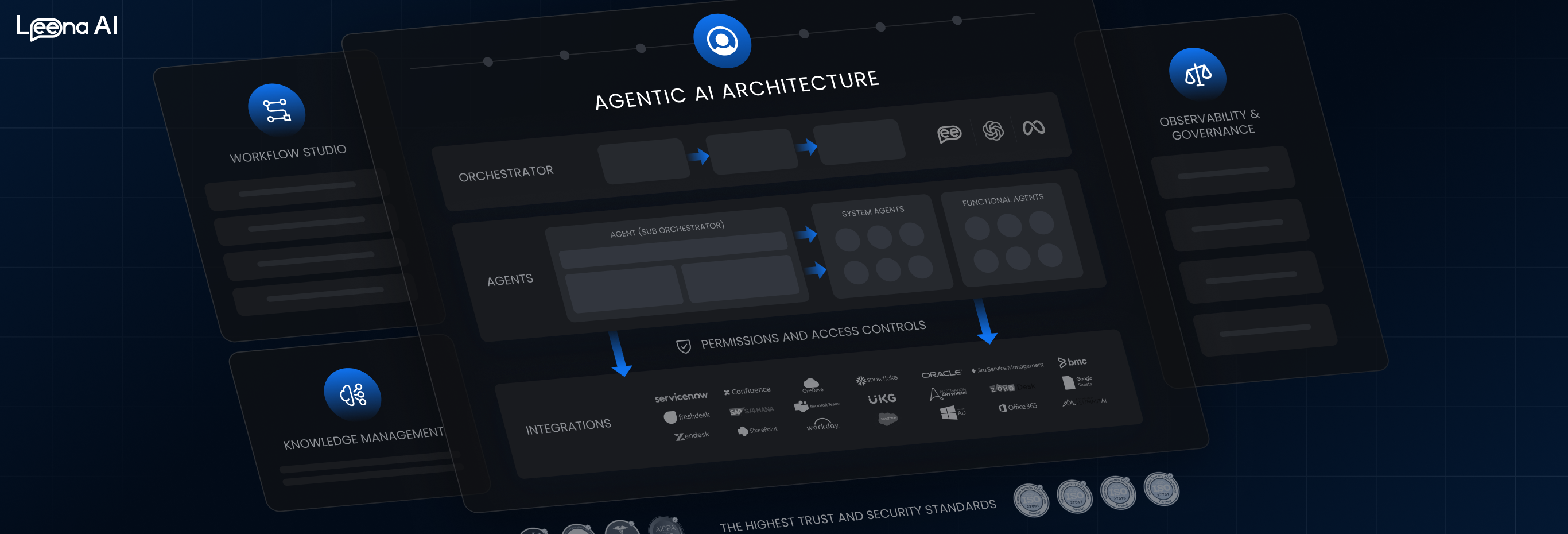Top 10 Network Automation Use Cases
The Network Automation Journey
When organizations begin their enterprise network automation journeys, top of mind is enhancing network security, increasing agility and ensuring business continuity. No matter what path they are on as they move from manual and scripted network management to code-free, error-free automation, they share some common ground on what urgent challenges to tackle first.

The Network Automation Journey
When organizations begin their enterprise network automation journeys, top of mind is enhancing network security, increasing agility and ensuring business continuity. No matter what path they are on as they move from manual and scripted network management to code-free, error-free automation, they share some common ground on what urgent challenges to tackle first.
This collection of network automation use-cases is designed help customers learn from each other about the common challenges they face, the key learnings they gain along the way, and the benefits they experience as a result of putting intelligent network automation to work on some of their most pressing network challenges.
The Gluware® Intelligent Network Automation software suite delivers the features, simplicity and reliability organizations seek today to discover, automate and orchestrate their complex, multi-vendor, multi-domain, multi-cloud network environments. To prevent network outages, manual errors and security issues, many global enterprises use the Gluware platform for an intent-based and declarative approach to automating their mission-critical networks.
As you explore these top network automation use cases and the IT challenges they present to enterprises today, you will learn more about the ways that Gluware is solving these problems for customers today.
Enhance Security
Ensuring network security is the #1 use case
for network automation. Intent-based and declarative automation works on many levels
to ensure security for the network. Intent-based network automation solutions identify potential security and configuration issues with drift, compliance and audit detection and can remediate configuration changes and accelerate OS upgrades, downgrades and patching. When automating a network, it is important to work with a solution that can actively interrogate the network to find violations and make changes using each vendor’s unique CLI with common policy enforcement for features like authentication, access control lists, SNMP, password management, and more.
|
Challenges |
Gluware Solution |
|
|
Discover device on your network with Gluware
Assess EoX, Smartnet status and vulnerabilities (PSIRTs) with Gluware
Automate OS management (upgrades, patches, downgrades) with Gluware
Automate Network Admissions Control (NAC) deployment with Gluware
Minimize Downtime and Outage
Analysts state that approximately 70% of all network outages are traced to human error and Network Operations spends 80%+ of their time trouble-shooting these issues. This is because networks are built over many years and most have significant technical debt, including aging, end-of-life equipment and unnecessarily bloated configurations. Since most network changes are still performed manually or through template pushes, companies are increasingly vulnerable and more prone to costly network outages. Implementing network automation to inventory, audit, update, and enforce consistent configuration policies can eliminate errors and reduce outages by 90+%.
|
Challenges
|
Gluware Solution
|
 Enable Compliance
Enable Compliance
Compliance and conformance to company
and 3rd party standards are critical to every organization. This is especially true for companies in regulated industries requiring SOX compliance, for financials requiring PCI-DSS and healthcare requiring HIPAA and FDA, among others. Implementing the ability to audit and ensure compliance is an integral component to satisfy 3rd party auditors to meet requirements.
|
Challenges |
Gluware Solution |
|
|
Accelerate Cloud
Organizations are accelerating “cloud-first” strategies, consuming Software as a Service (SaaS) and moving workloads to the cloud via Infrastructure as a Service (IaaS). SaaS and public cloud infrastructures have proven to drive agility, scalability, availability and align cost with consumption. Enabling an entire enterprise company to move from on-premises services, like mail servers and storage, to SaaS based services, like Microsoft 365, can mean significant changes to network traffic patterns. This will require a network re-architecture, or at least a reconfiguration, and most likely an iterative reconfiguration process to improve end-user performance.
|
Challenges
|
Gluware Solution
|
Optimize your Network
Network technical debt is the accumulation
of aging devices, old operating systems, unnecessary or partial configurations, and variances in deployments. This technical debt increases the cost of maintaining and operating the network. In some cases, technical debt decreases productivity across the entire organization, which can be expensive. Often organizations are forced into unnecessary hardware upgrades to achieve automation, which is another financial impact of technical debt. Automating the network is critical step to optimize the network through inventory all the devices running on the network, standardize on platforms and operating systems and minimize configuration complexity while enforcing standards.
|
Challenges |
Gluware Solution |
|
|
Make NetOps More Agile
Business requirements are constantly changing, and IT organizations must have the ability to be responsive to not just common and standard change requests, but to unplanned changes as well. Network changes implemented manually or that require the development and testing of scripts will significantly impede the agility of an organization. Outsourcing network changes also comes with significant delays and cost. Enabling the network team with advanced networking automation technology that does not require all the manual building and skill set development will accelerate changes, enabling agility to meet business needs.
|
Challenges
|
Gluware Solution
|
 Manage Network Lifecycle
Manage Network Lifecycle
Network automation is sometimes thought of only in the context of an initial configuration or a limited, scripted day 2 change. Automation should be thought of in the context of full lifecyle management of each network device and the services running on top of the network. The most challenging task is automating the currently deployed “brownfield” network and getting to a known, good state. Lifecycle management involves automating the initial deployment along with all related moves/adds/changes the business requires. This ranges from low-level policy changes to new end-to-end service deployments. Network automation is the key enabler to lifecycle management.
|
Challenges |
Gluware Solution |
|
|
Manage OS
Upgrading network device firmware/software is a complex and challenging task for IT operations, given that it introduces change—and therefore risk. It requires a highly coordinated effort to minimize downtime, especially when dealing with complex, multi-vendor, multi-operating system, and multi-domain networks. For example, IT organizations may try to limit firmware/software changes such as OS upgrades on their network equipment to once a year or security patching on an as needed basis only. Security vulnerabilities are the most urgent requirement and are the top priority for IT leadership because of the current high-profile hacks that are negatively impacting businesses operationally, financially and publicly. This drives the requirement for network management teams to automate network OS changes and security patching at scale much more frequently to minimize risks.
|
Challenges
|
Gluware Solution
|
Inventory and Assess your Network
Understanding the current status of the network, including vendors, operating systems, OS versions and vendor supportability, is critical to the network automation journey. The inventory should be complete and accurate. If a device or devices are not tracked, it could allow access to the network. In addition to deeply understanding the compostion of the network, intent-based network automation allows rogue devices to be identified including unauthorized network hardware, firmware or software including wireless access points and switches under desks. As many network executives, architects and operations teams know, such intrusions can be real-world vectors for enabling dangerous cyber-attacks or data theft. The process of conducting network inventory consists of several steps, typically performed by different systems including device discovery, hardware and software inventory and using the inventory data to drive best practices.
|
Challenges
|
Gluware Solution
|
Consolidate and Integrate
There is no shortage of tools and
systems for NetOps teams to use when performing network management. This
is a significant part of the challenge when managing networks since there are so many fragmented solutions for specific vendors or purposes including commercial legacy/vendor tools and home-grown solutions that have been built over years. These existing legacy tools and processes often impede the ability to implement change when it comes to network automation. With the current demand on IT operations, it is time to consolidate and modernize network management and automation. Modern technologies like intent-based networking, data-modeling and API integrations must be embraced to meet business needs for agility and security with stability.
|
Challenges |
Gluware Solution |
|
|
Gluware Solutions
Starting the Journey
When your team is ready to begin their enterprise network automation journey
towards code-free, error-free security and agility, Gluware® Intelligent Network
Automation delivers the capability many of our customers require:
- Flexible Automation: On-premises or cloud-delivered; One app or more
- Expanded Vendor Support: Growing list of platforms
- Inclusive Environments: Multi-vendor | Multi-domain | Multi-cloud
- Quality User Experience: Enterprise-class features and dashboards
- Multiple Payment Offerings: Get started your way
Join The GBI Impact Community
Sign up to make an impact and hear about our upcoming events
By registering anywhere on the site, you agree with our terms and privacy policy



